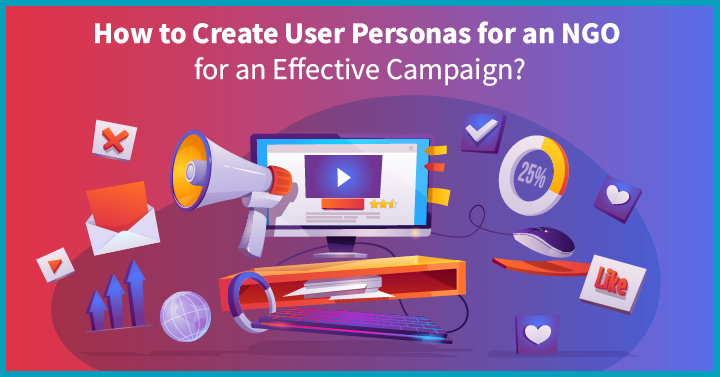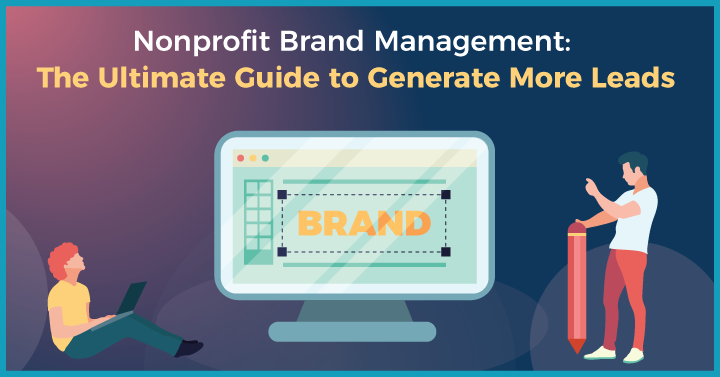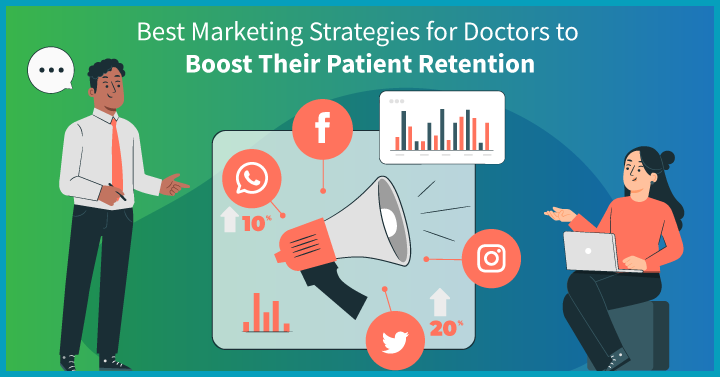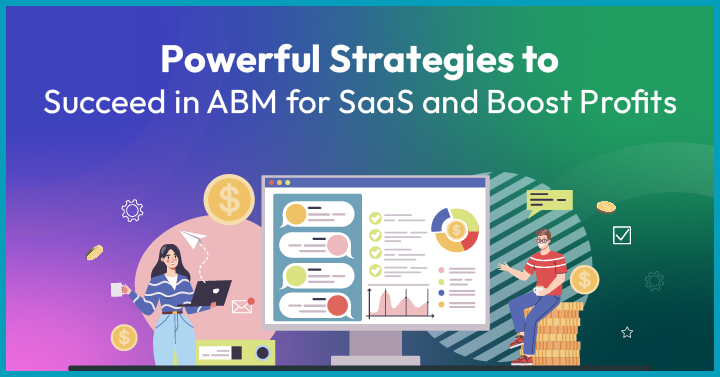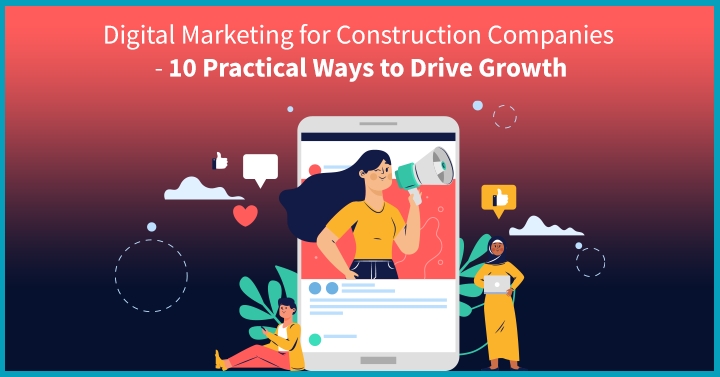In today’s digital age, non-governmental organisations (NGOs) face immense competition when it comes to capturing the attention of their target audience. With limited resources and a need to make a significant impact, NGOs must find innovative ways to engage their supporters and drive their campaigns forward.
One highly effective strategy that has proven to be a game-changer for many NGOs is the creation of user personas.
A report by delve.ai states, “90% of organisations that develop user personas have been able to create a better understanding of their audience”.
By understanding their target audience on a deeper level, NGOs can tailor their campaigns to resonate with their supporters, ultimately leading to increased engagement and success.
In light of this, we present to you a blog on how NGOs can develop user personas to improve the effectiveness of their campaigns.
1. What Is a User Persona?
User persona, also known as buyer persona or audience persona, is a fictional representation of your target audience. They are created after extensive research and data analysis to provide a deep understanding of your potential customers, their motivations, needs, and preferences.
User personas go beyond basic demographics and delve into the psychographics of your audience, helping you understand what drives their decision-making process and how to effectively communicate with them. User personas for an NGO campaign can help you identify and prioritise the specific segments of your target audience that are most likely to support your cause.
2. Why Do NGOs Need to Know How to Create User Personas?
Whether it’s for a fundraising campaign or a brand awareness program, you need to know how to create user personas that are specifically tailored based on your marketing goals to get the desired results. Here are a few reasons why crafting user personas proves invaluable for NGOs:
- It helps you personalise specific content for your audience, eventually resulting in more actions like – signing a petition, donating, or supporting a cause.
- User personas help NGOs design programs and interventions that directly address the needs of their beneficiaries.
- NGOs often operate with limited resources. User personas help in prioritising efforts and allocating resources more efficiently by focusing on the most critical needs of the target audience.
- User personas can be used as benchmarks for evaluating the success of programs. By regularly revisiting personas and comparing them to real-world data and feedback, NGOs can assess the impact of their initiatives and make adjustments as needed.
3. Who Is the Target Market for Nonprofit Organisations?
3.1 Donors
Donors are essential target audiences for nonprofits, as they provide donations to your organisation and support your goals. There are different types of donors, such as – individual donors, major donors, foundations, and corporate donors. It is crucial to find donors whose interests match your organisational goals.
3.2 Volunteers
Volunteers are those who wish to support your organisation. It is the hard work of volunteers that is behind the success of various fundraising campaigns and other events. They are tremendous resources for nonprofits and charitable organisations, as their work helps raise funds or serve clients. For instance, millennial volunteers on social media can be potential word-of-mouth advocates to promote your brand and help drive more funds.
3.3 Sponsors
Corporate sponsors often support various causes like child labour, women’s empowerment, saving the environment, and more. Corporate sponsors support nonprofits by donating money, providing volunteers, promoting a cause, and more. Additionally, they provide goods, services, and money in exchange for promotional benefits and brand reputation.
4. How to Create User Personas for an NGO?
Creating user personas for your NGO campaign involves a systematic process of research, data gathering, analysis, and more. Here are the key steps to follow:
4.1 Research Your Ideal Donors
According to a survey, 80% of nonprofits’ revenue comes from 20% of donors. To get more donors, you must conduct in-depth research and look for high-potential donors who may be significant contributors to your cause. The goal of your study is to identify potential donors who have both affinity and capacity. In this regard, wealth screening is a primary factor that helps you evaluate existing donors.
To conduct research successfully, you need the right tools to analyse the information. Some popular tools are – internal donor records, Google, Wikipedia, classified sites, directories, prospect generator tools, matching gift databases, and social media platforms.
4.2 Use Surveys for Data Collection
You need adequate data on your target audience. You can collect some by conducting surveys, questionnaires, polls, and quizzes. Some popular tools to conduct surveys are – SurveyMonkey, SurveySparrow, Qualtrics, and Mopinion. Alternatively, you can mail a simple question to your segmented list and follow up with content specifically targeted for them.
Surveys provide more qualitative data about what they are interested in versus what your organisation offers. Many times, organisations have some idea of what their audience wants. However, surveys and interviews help you know what they feel about your organisation.
4.3 Include Basic Demographics
Understand the characteristics of current supporters and make a list of qualities you would like to see in your ideal audience. Segment them into groups based on their demographics and interests. You can break them down into groups: retirees, self-employed, recent graduates, professionals, and so on.
Then create nonprofit audience personas for each group. Remember that you must treat them like real people interested in your organisation. For instance, John is a 21-year-old pursuing graduation and looking for a source of income – you can send him messages related to volunteering.
4.4 Understand Their Motivation
To get a clearer picture, you need to analyse their behaviour and interest in depth to gain traction in a highly competitive sphere. You need to understand your organisational goals match the interests of your audience. At this stage, you can ask a few questions, such as –
- What stops the donors from donating?
- Are you targeting the right group?
- Is your message conveyed clearly?
- What should be your call to action?
4.5 Create Scenarios
User personas for NGO will become valuable only when they are linked to a scenario. By creating scenarios, you are painting a picture of a set of events that help your team understand the practical needs and behaviours of users. Imagine a situation that describes how your persona would interact with an event or campaign. Make sure to create a scenario from the persona’s perspective and articulate the possible cases that will likely happen. When your team creates and uses these scenarios, it gives the user an environment and a face.
Once you have gathered all the information, you can use characteristics to identify nonprofit audience personas. For instance, based on their characteristics – you can name them Volunteer Steve, Donation David, and so on.
4.6 Share Findings with the Team
By sharing the findings with your staff and volunteers, they develop a better understanding of the target audience. As your team becomes familiar with different user personas, they will start interacting and creating real-life scenarios based on these.
Encourage your team to keep the user personas handy, especially when running content marketing campaigns or paid ads. Teach them how the personas can play an essential role in your marketing activities.
5. User Personas Example
Let’s say, you are a charity organisation that aims to provide internship or volunteering opportunities to graduates to help them add new skills to their CVs. You want to run a campaign targeting graduates who wish to learn new skills. Below is how to create a user persona –
- Persona – Recent Graduate
- Name – John
- Age – 20 years
- Gender – Male
- Occupation – Unemployed
- Income Status – None
- Location – Sydney
- What are the challenges faced by John?
Although there are many nonprofits in Sydney that John could apply to learn new skills, he would apply if he knew there was a requirement. Then, he would search online and find sites that gave him all the required information and showed relevant opportunities.
- What are the goals of John?
John’s main goal is to get a job at a top MNC. However, he wants to create a portfolio beyond his academic qualifications to stand out in this competitive space. So, he is looking for opportunities in Sydney to help him add new skills to his portfolio.
- What are John’s interests?
John loves to travel in his free time. He is also a fan of Marvel stories. Remember that you can find this information in his social media profile.
- What is his behaviour type?
Easily distracted, frequently checks social media, prefers to rent movies, and is an early adopter of technology.
- What are his frustrations?
Social injustice, classic advertising, inauthenticity
Based on the above, you can create different user personas for John, such as – student, graduate, or job seeker.
- Now, the question is – how to target John?
To target John, you must first know if the website has all the required information John is seeking for. Here are a few considerations –
- Is the website form optimised for the user?
- How to improve the SEO of the website?
- Is the landing page content targeted?
To target this persona, you can publish informative and engaging articles on your website that help answer John’s queries. You can drive relevant traffic to website through targeted SEO campaigns. Also, you can share relevant posts on special media by using hashtags that target John.
6. Tools and Resources for Creating User Personas for NGOs
Creating user personas for NGOs can be a complex process, but there are several tools and resources available to simplify the task. Here are a few popular ones:
- Google Analytics: Google Analytics provides valuable insights into the demographics, interests, and online behaviour of your website visitors.
- SurveyMonkey: SurveyMonkey is a powerful tool for conducting online surveys to gather qualitative insights from your target audience.
- Customer Relationship Management (CRM) Software: CRM software, such as Salesforce or HubSpot, can help you manage and analyse donor and supporter data, enabling you to extract valuable information for creating user personas.
If creating a user persona for your NGO feels daunting, seek the expertise of a digital marketing agency. Let’s see how their assistance can be a game-changer for you.
7. How Can a Digital Marketing Agency Help?
Digital marketing agencies have the expertise and resources to conduct thorough research and analysis, ensuring that user personas are based on accurate and latest data. They can also provide guidance on how to use user personas to improve campaign strategies, ensuring that messaging and tactics resonate with the target audience and improve overall marketing ROI.
Growth Ganik is a full-stack digital marketing agency. We develop and implement campaigns that leverage user personas effectively. Our team of experts gather insights about your target audience and create accurate user personas for your NGO based on the data collected. We use these user personas to guide messaging, content creation, paid ads and to develop overall campaign strategy.
Book a free 45-minute consultation with our experts to learn more about how our digital marketing agency can help your NGO create user personas and improve the effectiveness of your campaigns.
8. FAQS
- Why are user personas important for NGOs?
User personas are important for NGOs because they provide a deep understanding of the target audience. By creating personas, NGOs can tailor their campaigns to address the specific needs, motivations, and preferences of different segments of their audience. This leads to more effective and impactful campaigns.
- How many user personas should an NGO create?
The number of user personas an NGO should create depends on the complexity of their target audience. It’s recommended to create at least three to five personas representing different segments. This can include donors, sponsors, and volunteers.
- How Do I Set up a Donor Persona?
For creating donor personas, you must have an in-depth understanding of your target audience, their demographics, interests, age, gender, and location.
- How Can I Promote My NGO?
Some of the best ways to promote your NGO are social media marketing, referral marketing, influencer marketing, and SEO.
- How Much Should a Nonprofit Spend on Marketing?
As a general rule, your nonprofit marketing can be roughly between 5-15% of your operational budget.

